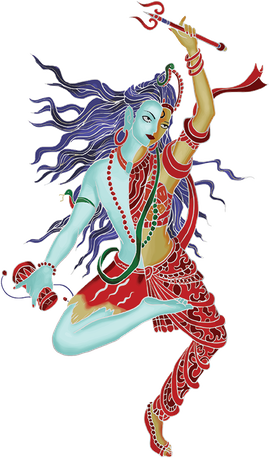Can we really be NON-violent? Some thoughts on Ahimsa
We are moving away from our newsletter format because we know that in today’s world, no one needs to be overwhelmed with information. Instead, we are returning to the blog. Our intention is for the blog to have a focus and each subsequent blog will take the reader deeper into the subject material.
Our theme for the next three months is Ahimsa, or non-harming. In these turbulent times, it seems a good place to start. We will be looking at the philosophy of ahimsa and how to put it into practice on and off the mat through yoga, meditation, ayurveda and random (or planned) acts of kindness to self and others.
Confucius said, “To put the world in order, we must first put the nation in order; to put the nation in order, we must first put the family in order; to put the family in order, we must first cultivate our personal life we must first set our hearts right.” This mirrors the philosophy of Samyoga Institute. In order to be truly present with another, we must be able to be present with ourselves.
Lets explore the roots of this word. Hims means to strike; himsa is injury or harm. When an “a” is put in front of a Sanskrit word, it negates what follows. In other words, ahimsa means “to not strike or harm,” or as commonly defined, non-violence.
Ahimsa is a fundamental tenet of three major religions, Jainism, Hinduism and Buddhism and is why, traditionally, individuals on these spiritual paths practiced vegetarianism. Although ahimsa was originally translated as non-killing, it evolved over time to mean non-injury- physically, mentally and/or verbally. This translation suggests that we not strike anyone, say mean things, or even think negative thoughts.
When confronted with the reality of what is being asked, it becomes clear, at least to this writer, that the evolved translation is impossible, at least for most householders. Is it really possible to never get our buttons pushed, to never get angry or frustrated? I don’t think so. We are neurologically hardwired to experience some basic emotions that are necessary for our survival: love, fear, anger, sadness or grief and joy. Our ability to get mad, to rise to our or someone else’s defenses, is necessary for our survival. So how can we reconcile our innate emotions with the knowledge that this concept is essential to the future of the world?
It might begin by shifting the meaning from “non-violence” to “compassion and loving kindness.” (I cannot claim ownership of this idea. It goes to the very heart of non-dualism). As soon as we decide to be non-violent, we have already committed an act of violence against ourselves. When we are “not this or that,” we have separated ourselves from humanity, and this creates a disconnect to the underlying belief of ahimsa — that all beings are divine. So if we harm another, we harm ourselves. Perhaps then the reverse is true. If we harm ourselves, we harm others.
Ahimsa is the very first step of the 8-limbed path of Patanjali’s Yoga Sutras. Perhaps this is advising us that everything we do, on or off the mat, be done from a place of compassion and loving kindness.
By applying compassion, we can turn the light of awareness on, creating an understanding of why we acted or thought in a certain manner. We can explore if the situation was indeed dangerous or if our “ego” got tweaked and it is the one being defended. Ahimsa teaches a very simple lesson, yet one that is hard to live by if we are allowing our ego to be our primary responder to situations. The mind is difficult to control. Thoughts of a violent nature toward others or ourselves can occur and spin out of control. An important lesson to learn here is to differentiate between truth and “chatter.” Truth tends to be penetrating, direct, and without a lot of words whereas chatter, the unconscious fears and patterns (samskaras) tend to be just the opposite. Consider self-defeating thoughts, “I’m not good enough. If only I were more like . . ., I am an awful person.” All of these thoughts are not Truth, but un-reality. As non-truth, they warrant questioning and examining because they undermine the basic truth of our unity. When we understand this, we can then talk to ourselves with loving kindness, reassuring ourselves that there isn’t a tiger out there ready to eat us. When we become aware of that and feel safe, we can use the marvelous tools in our toolbox to calm the system down. When that happens, reason is restored and we can choose the best course of action. That is the key to our behavior, to be able to choose rather than react. In order to do this, compassion needs to extend to not just others and nature but ourselves as well. Luckily, yoga practice allows us to develop witness consciousness, which allows us to examine these beliefs and to heal, and this will be the focus of our upcoming blogs.
